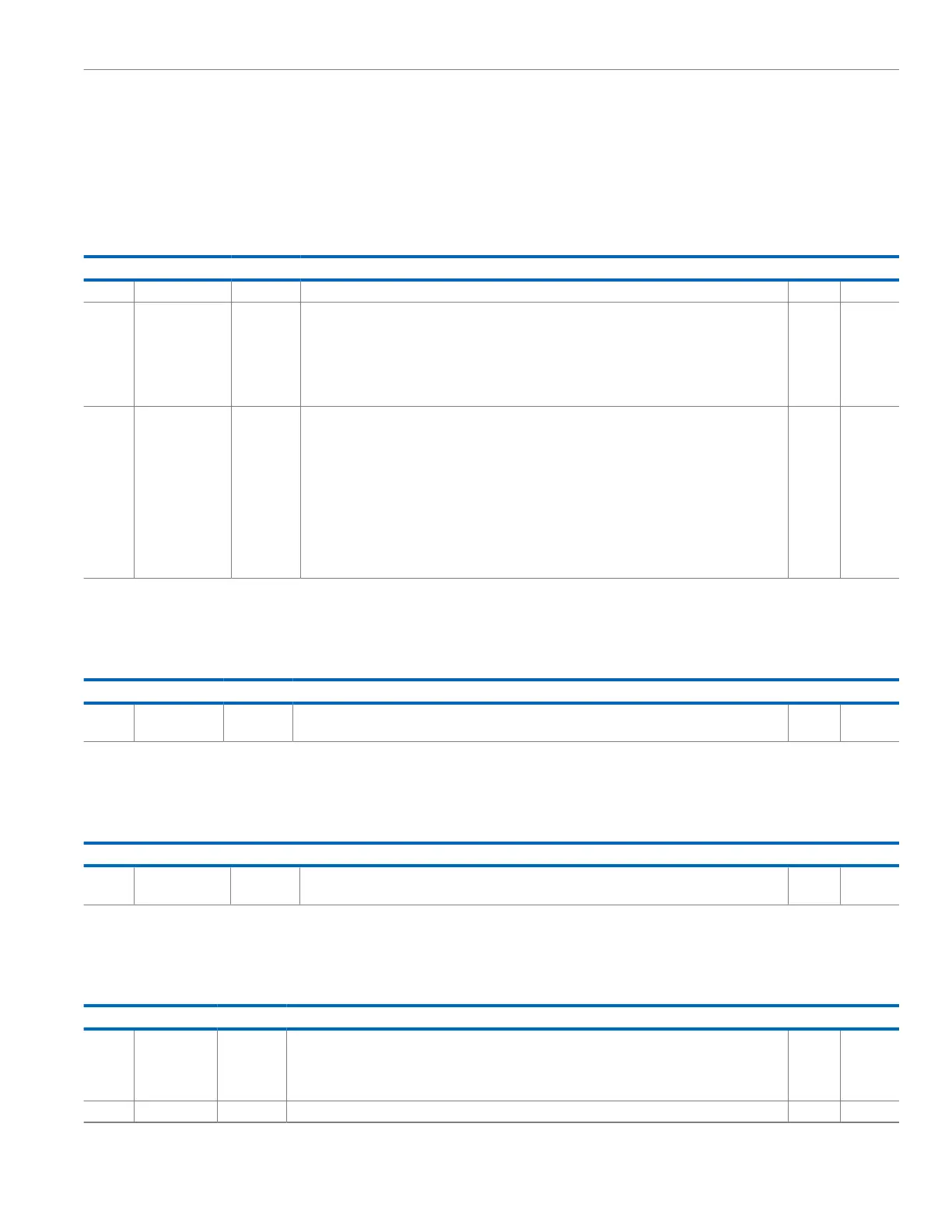Reference Manual ADuCM356
REGISTER DETAILS: FLASH CACHE CONTROLLER (FLCC)
analog.com Rev. A | 197 of 312
USER CONFIGURATION REGISTER
Address: 0x40018030, Reset: 0x00000000, Name: UCFG
User key is required. Write to this register to enable user control of DMA and autoincrement features. When user code has finished accessing
this register, write arbitrary data to the key register to reassert protection.
Table 236. Bit Descriptions for UCFG
Bits Bit Name Settings Description Reset Access
[31:2] Reserved Reserved. 0x0 R
1 AUTOINCEN Automatic Address Increment for Keyhole Access. When this bit is set, KH_ADDR automatically
increments by 0x8 during each write command or after each read command, enabling user code to
write a series of sequential flash locations without having to manually set the flash address for each
write. The KH_ADDR register is incremented, and can be observed by user code when STAT, Bit 5
is asserted during a write command or after a read command. When this bit is set, user code cannot
directly modify KH_ADDR.
0x0 R/W
0 KHDMAEN Keyhole DMA Enable. The flash controller interacts with the DMA controller when this bit is set.
Prior to setting this bit, write the starting address to the KH_ADDR register. Then configure the DMA
controller to write data to the KH_DATA1 register (address must be data word aligned), to always
write pairs of 32-bit words (R_POWER = 1), and to write an integer number of data pairs (for an
odd number of words, user code must write one word manually without the help of DMA). All DMA
writes automatically increment the target address (similar to the behavior of UCFG, Bit 1). The DMA
controller can only be used to write sequential addresses starting from the value of KH_ADDR. The
flash controller automatically begins write operations each time the DMA controller provides a pair
of words to write. Interaction with the DMA controller is designed to use burst writes, which can
significantly reduce overall programming time.
0x0 R/W
IRQ ABORT ENABLE (LOWER BITS) REGISTER
Address: 0x4001803C, Reset: 0x00000000, Name: ABORT_EN_LO
Table 237. Bit Descriptions for ABORT_EN_LO
Bits Bit Name Settings Description Reset Access
[31:0] VALUE[31:0] System IRQ Abort Enable. To allow a system interrupt to abort an ongoing flash command, write 1 to the
bit in this register corresponding with the desired system IRQ number.
0x0 R/W
IRQ ABORT ENABLE (UPPER BITS) REGISTER
Address: 0x40018040, Reset: 0x00000000, Name: ABORT_EN_HI
Table 238. Bit Descriptions for ABORT_EN_HI
Bits Bit Name Settings Description Reset Access
[31:0] VALUE[63:32] System IRQ Abort Enable. To allow a system interrupt to abort an ongoing flash command, write 1 to
the bit in this register corresponding with the desired system IRQ number.
0x0 R/W
ECC CONFIGURATION REGISTER
Address: 0x40018044, Reset: 0x00000002, Name: ECC_CFG
Table 239. Bit Descriptions for ECC_CFG
Bits Bit Name Settings Description Reset Access
[31:8] PTR ECC Start Page Pointer. Write Bits[31:8] of the start page address into Bits[31:8] of this register. This bit
is a byte address for any page in user flash. The bottom bits of this address are ignored by the flash
controller, forming a page address. When ECC is enabled and user code reads any address from within
the page specified, ECC functions are performed. Reads from less significant pages bypass ECC entirely.
0x0 R/W
[7:2] Reserved Reserved. 0x0 R

